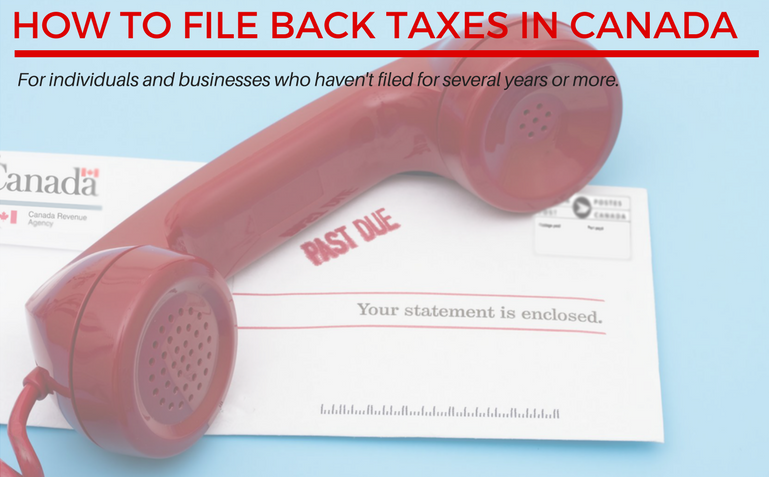Haven’t filed personal or small business (T1), corporate income tax (T2), or GST/HST returns in several years or more?
Have you been contacted by or acted upon Canada Revenue Agency (CRA) including a Request to File or a Notional Assessment (of exaggerated estimated amounts owing just to get your attention)? Or do you want or need to become up to date with tax filings for various personal reasons?
You may feel a sense of urgency or despair to catch up on unfiled previous years’ taxes. That’s ok, it taxes the mind too.
You may be tempted or receive advice to just file on your own online or visit a tax-preparer not specialized in late-filed returns and CRA encounters. However, there are many factors to consider when filing multiple years’ tax returns. It’s not just about catching up; you want to carefully consider your options and likely encounters with CRA. You will want to reduce your tax liability as much as possible as well. An experienced firm specializing in late filing, such as TaxWatch Canada, can help you achieve the best possible outcome for you. We suggest the following steps:
Step 1: Gain more insight.
Contact us for a free, no-obligation consultation to discuss the severity of your situation and receive vital insight regarding how the tax system really works. For example – how far back do you need to file? What about your spouse or live-in partner? What is considered tax evasion? How does CRA collect amounts due? How much time does CRA take? Should you consider and/or do you qualify for Voluntary Disclosure (tax amnesty)?
Step 2: Gather your documents.
For personal returns, you will need any and all T-slips (such as T4s and T5s). If you are missing any slips or are unsure if you have them all, you can get them online using CRA’s ‘My account’ or you can call CRA to have copies sent to you. (For more info about missing tax information you can read our other blog post: How do I get my previous years T4 and/or other tax slips?) There are severe penalties charged for missing more than one tax slip. If you have any credits to claim such as tuition, medical and/or donations, you will need those records as well.
For self-employed or corporate taxes you will need a more elaborate gathering of income, expenses and related transactions. Some sort of bookkeeping program or use of spreadsheets can solve many documentation issues. We can also help determine if the use of estimates is appropriate in cases of missing records.
Do not spend a great deal of effort summarizing your transactions until you talk to us (or the firm you want to use). This is a time and cost saver because you need to know how to use what data you have, what else is needed and who (you or the firm) is going to do what.
TaxWatch can assist with bookkeeping and review financial records and transactions to complete returns and provide the backup if CRA questions the returns. Note: the probability of a CRA audit (even for multiple years) is low.
Step 3: Get the big picture.
Have draft returns prepared for all unfiled years. This provides perspective and helps in choosing options that are relevant. Consider in advance how to best approach CRA regarding the tax debt outcome before you file. Attention has to be paid to possible late filing penalties and accumulated interest. If there will be a considerable amount of tax debt, consider how the debt can be managed and how it may affect you in other aspects of your life, for example, tax debt can impact lenders or other creditors and/or those who depend on you, it may also affect your receipt of CPP, OAS, pensions or employment income.
Step 4: Finalize returns and submit to CRA.
Give yourself credit for getting it done and await receipt of your Notice(s) of Assessment.
Step 5: Review your assessments.
Your assessments should be matched to what was filed and reviewed for penalties and interest inclusions. Note that the liability for multiple years is accumulated on the assessment. Sometimes CRA does not assess all years at once. The most recent year will have the cumulative total owing; do not add all the years together – heart attacks will be reduced.
If there are any discrepancies on the assessments address them. (TaxWatch will review and contact CRA is necessary on your behalf if you have engaged us to file your returns).
Step 6: Handle the debt.
Payment arrangements with CRA can be made. However, you should not make promises to them that you know you can’t keep just to temporarily appease them. CRA collections have rather rigid payment guidelines but must be addressed. Do not avoid CRA or misrepresent things and you will prevail. If needed, TaxWatch can review the merits and consequences of alternative solutions to tax reduction, including bringing more certainty to outcomes, even if it means entering the world of insolvency professionals for debt consolidation or bankruptcy.
Get Started
We realize you may be in a sensitive situation and need someone trustworthy to contact about your late filing situation. If you are serious about moving forward in some way we would be happy to hear from you and will be straightforward and transparent in helping you in the way you that suits your situation the best.




